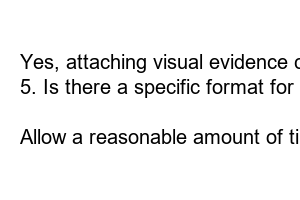지하철 민원문자
Title: A Subway Complaint Letter: Improving the Travel Experience
Introduction:
Have you ever had a frustrating experience while using the subway? Perhaps you encountered a delayed train, uncomfortable seating, or unresponsive customer service. In this blog post, we will discuss the importance of expressing your grievances through a complaint letter and provide a step-by-step guide on how to write an effective one to the subway authorities. Let’s dive in!
1. Understanding the Power of a Complaint Letter:
Your voice matters! Writing a complaint letter allows you to express your concerns, contribute to improving services, and ensure a more pleasant travel experience for yourself and others. By addressing your grievances directly to the subway authorities, you can make a significant impact.
2. Addressing the Issue:
When starting your letter, make sure to include the date, your contact information, and the specific subway line or incident you want to discuss. Be concise and straightforward, **clearly** stating the problem you encountered. For instance, “During my daily commute on the Red Line yesterday, I experienced a delay of over 30 minutes, causing me to be late for an important meeting.”
3. Providing Detailed Information:
To make your complaint more compelling, **include** relevant details, such as the time, location, and train number. Share how the incident affected you, emphasizing any additional inconveniences caused. Remember, sharing accurate and specific information helps the authorities investigate and address the problem promptly.
4. Expressing Your Feelings:
While writing your complaint letter, utilize strong and direct language to express your frustrations but do so politely. For example, instead of saying, “Your staff was rude,” you could say, “I was disheartened by the lack of courtesy exhibited by a member of your staff.”
5. Suggesting Solutions:
In addition to outlining the issue, provide suggestions on how the problem can be resolved. This shows your proactive mindset and genuine interest in improving the subway experience for everyone. Encourage the authorities to consider your ideas and offer any support you can provide.
6. Requesting a Response:
To ensure your complaint is taken seriously, ask for a prompt response from the subway authorities. Include your preferred method of contact, such as an email address or phone number, and express your desire for a resolution within a reasonable time frame.
7. Summary of the Entire Article:
Writing a complaint letter to address issues encountered during subway travel is an effective way to voice your concerns and work towards improving the overall experience. By following the steps outlined in this blog post, including addressing the issue, providing detailed information, expressing your feelings, suggesting solutions, and requesting a response, you can effectively communicate your grievances and contribute to positive change.
FAQs:
1. What should I do if I receive no response to my complaint letter?
If you receive no response within a reasonable time, consider escalating the issue by contacting higher authorities, such as the subway’s customer service department or relevant government agency responsible for transportation.
2. Can I write a complaint letter on behalf of others who experienced the same issue?
Absolutely! Writing a collective complaint letter on behalf of multiple individuals who encountered the same problem adds weight to your concerns. Encourage others to join and include their consent in the letter.
3. Should I keep a copy of the complaint letter for my records?
Yes, it is essential to keep a copy of your complaint letter, as well as any related correspondence, for your records. This documentation may prove useful if you need to escalate the complaint.
4. Can I include evidence, such as photographs or videos, with my complaint letter?
Yes, attaching visual evidence can strengthen your case. Ensure that any attachments are clear, relevant, and directly support your complaint.
5. Is there a specific format for a complaint letter?
While there is no strict format, it is essential to maintain a polite and professional tone throughout the letter. Organizing your letter with a clear introduction, body, and conclusion is recommended.
6. How long should I wait for a response before escalating my complaint?
Allow a reasonable amount of time for a response, such as two to three weeks. If no response is received, or if the response does not adequately address your concerns, consider escalating the issue.

